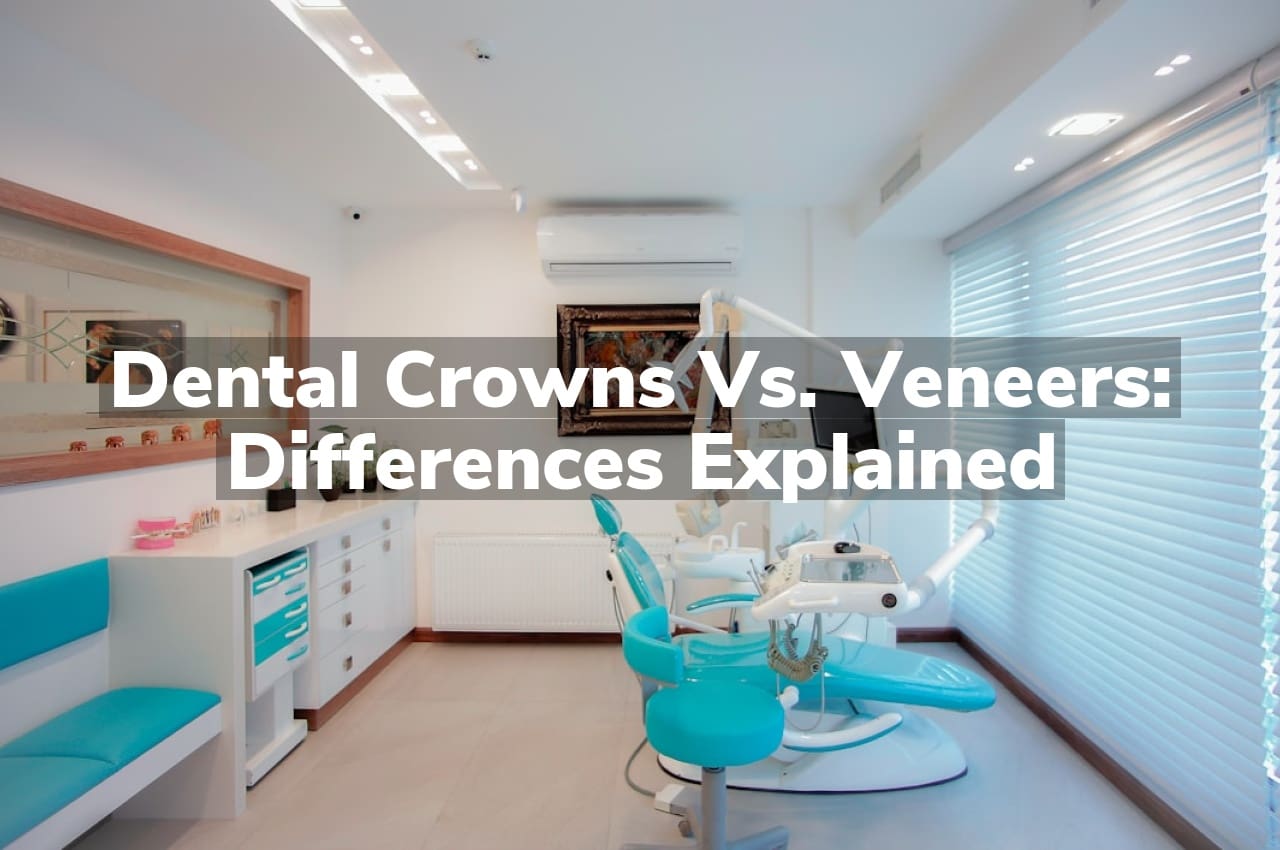Are you wondering about the key differences between dental crowns and veneers? While both options aim to improve the appearance and function of your teeth, crowns encase the entire tooth whereas veneers are thin covers that attach to the front surface of the teeth.
Definition and Purpose
Dental crowns and veneers are two types of dental restorations used to improve the appearance and functionality of teeth, but they serve different purposes and are applied in distinct ways. A dental crown is a cap that covers the entire tooth, restoring its shape, size, strength, and appearance. Crowns are typically used when a tooth is significantly damaged or decayed, providing a protective shell that encases the entire visible part of the tooth above the gum line. On the other hand, veneers are thin shells of porcelain or composite material that are bonded to the front surfaces of teeth. They are primarily used for cosmetic purposes, such as correcting the color, shape, size, or length of teeth, offering a solution for teeth that are discolored, worn down, chipped, or misaligned.
While both dental crowns and veneers aim to improve dental health and aesthetics, their application, preparation process, and suitability for different dental issues vary significantly. Crowns encompass the entire tooth and require more extensive preparation, including the removal of a significant portion of the tooth structure. This makes them suitable for teeth that have undergone significant damage or decay. Veneers require less removal of the tooth surface and are mainly focused on enhancing the appearance of teeth. The choice between a dental crown and a veneer depends on the specific needs and goals of the patient, as well as the professional recommendation of a dentist. For those considering a more permanent solution to dental restoration, understanding the Lifespan and Durability of Dental Crowns can provide valuable insight into making an informed decision.
Material and Durability
When considering dental crowns and veneers, understanding the differences in material and durability is crucial. Dental crowns are typically made from porcelain, ceramic, metal, or a combination of these materials, offering a robust solution that covers the entire tooth. This comprehensive coverage is designed to restore the tooth’s shape, size, and strength, making crowns a durable option for teeth that have been significantly damaged or decayed. On the other hand, veneers are thin shells of porcelain or composite resin that are bonded to the front surfaces of the teeth. While they are also made from durable materials, veneers are primarily used for cosmetic improvements, offering a less invasive option to enhance the appearance of teeth that are discolored, chipped, or slightly misaligned.
Both options come with their own set of advantages in terms of material choice and longevity. The decision between dental crowns and veneers largely depends on the specific dental needs and the desired outcome. For those looking to restore or enhance their smile while ensuring durability, consulting with a dental professional is essential. If you’re considering dental crowns, finding a reputable dentist is key to achieving the best results. For residents in Yorba Linda, visiting Top Dental Crown Dentists in Yorba Linda can provide you with the expert advice and treatment options tailored to your needs.
Procedure and Application
When considering dental crowns and veneers, understanding the procedure and application of each is crucial. Dental crowns encompass the entire tooth, requiring the dentist to reshape the original tooth to fit the crown over it, which is designed to look like a natural tooth. This process is generally used for teeth that are significantly damaged or decayed. On the other hand, veneers are thin shells that cover only the front surface of the teeth, requiring minimal alteration of the original tooth. They are typically applied to enhance the appearance of teeth by adjusting their color, shape, size, or length. Both procedures are conducted in a dental office and require professional assessment to determine the most suitable option based on the individual’s dental health and aesthetic goals.
Aesthetic Outcomes
When considering the aesthetic outcomes of dental crowns versus veneers, it’s essential to understand how each option can enhance the appearance of your smile. Dental crowns cover the entire tooth, offering a solution for teeth that are significantly damaged or decayed, and can be matched to the color of your natural teeth for a seamless look. Veneers, on the other hand, are thin shells that attach to the front surface of the teeth, ideal for correcting minor imperfections, such as chips, gaps, or discoloration. Both options are tailored to blend with your natural teeth, aiming to improve your smile while maintaining a natural appearance.
For those exploring cosmetic dental options in Yorba Linda, Yorba Linda Dentist at Dentique can provide further insights.
Maintenance Requirements
When considering dental crowns and veneers, understanding the maintenance requirements for each is crucial for long-term oral health. Both options require a commitment to good oral hygiene practices, including regular brushing and flossing. However, the specifics of their care can vary due to the differences in their application and material composition. Regular dental check-ups are essential for both treatments to monitor their condition and ensure their longevity. It’s important to discuss with a dental professional how each option fits into your lifestyle and how you can best maintain your dental health following either procedure.
Conclusion
Understanding the differences between dental crowns and veneers can guide you in making informed decisions about your dental health. For more insights, call us at (657) 234-0430 or read our reviews on Google Maps.
